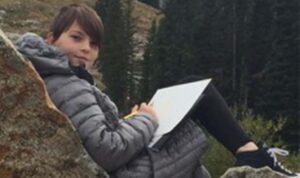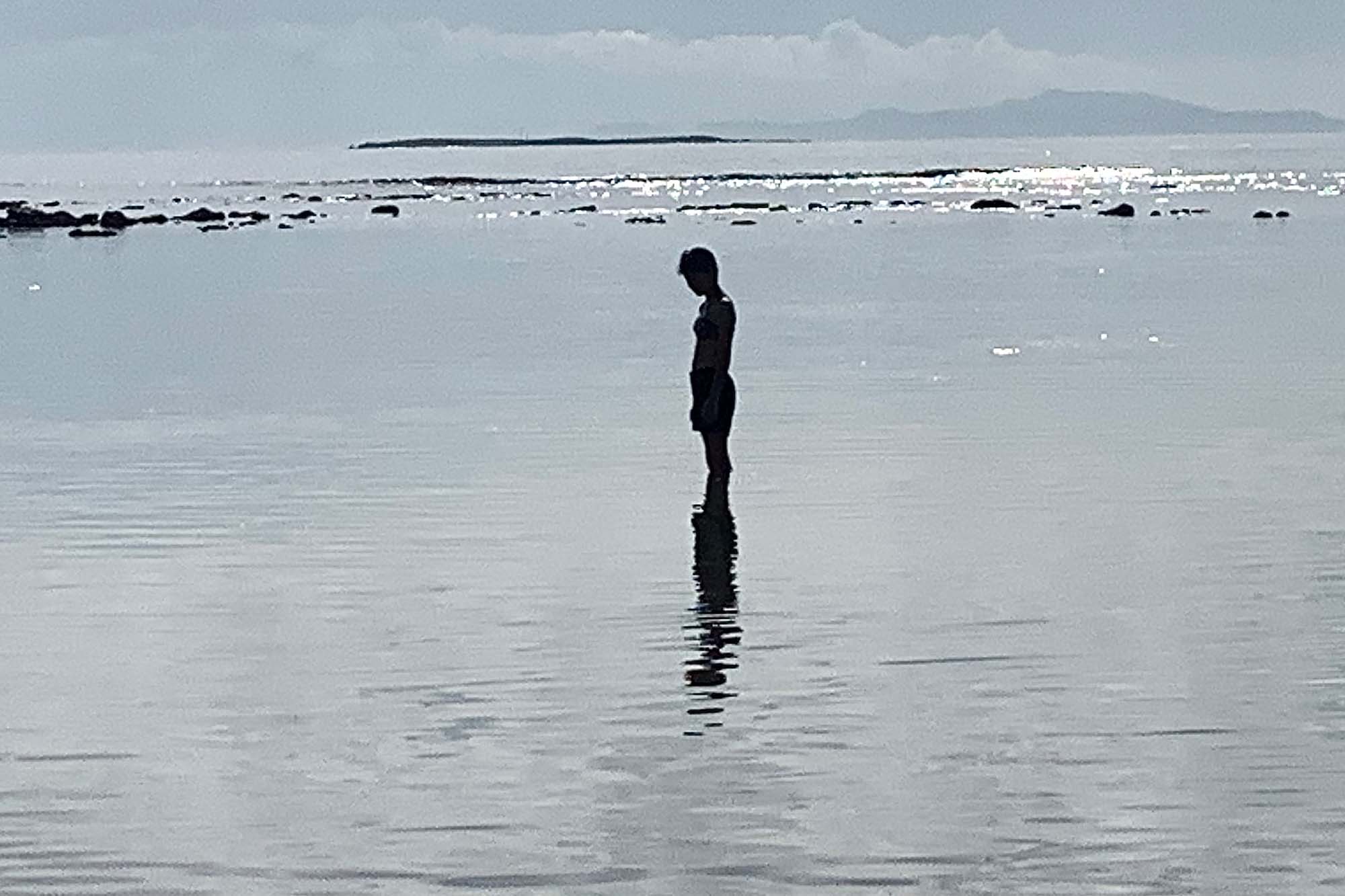
To whom It may concern,
Readers should note that biologists, grad students, and intrigued 13-year-olds may stop frequently to observe things.
February 14, 2022, Week 05 – Isla De Santa Cruz, Ecuador
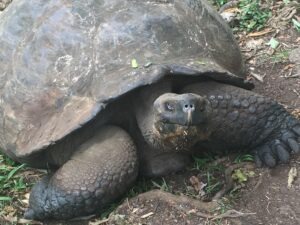
This week our day off was spent in the “highlands,” although at 2,800 feet above sea level, the highlands aren’t especially towering. This area gets more rain than the rest of the island because of its height, so the plants are greener there. Much of the wildlife on Santa Cruz stays in the highlands during drier years because it’s the most sustainable place for them. Which means that you can see Galapagos Tortoises everywhere! These tortoises can grow more than five feet in length, and reach up to 500 pounds!
We spent the morning driving and walking around the highlands. Local friend Goberth (who, as I mentioned in an earlier post, drives us to the field station in the morning) took us to a landmark called “Los Gemelos” (“The Twins”), which are two giant sinkholes on either side of the road. We watched birds fly over the top and spent a while trying to decide if a particularly tall tree was in fact two different trees.
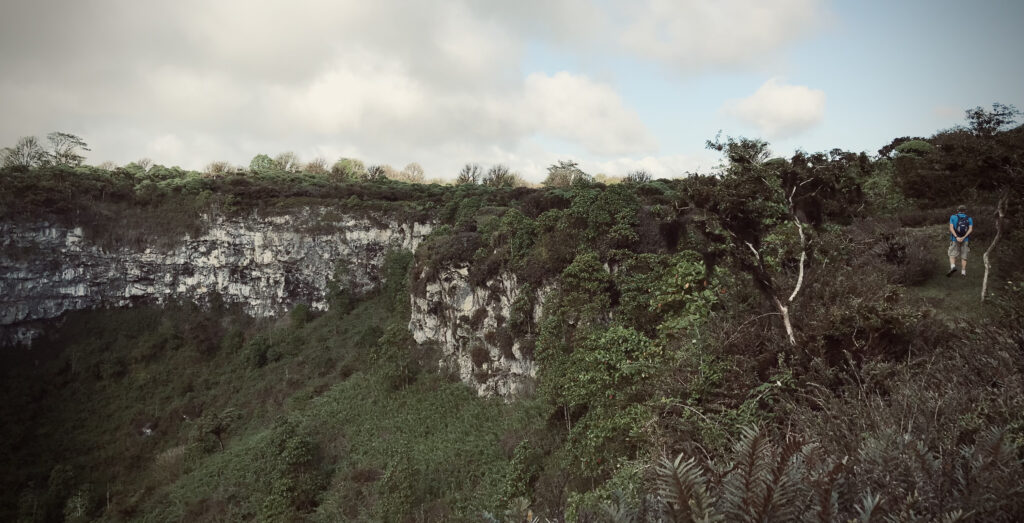
A trail winding around Los Gemelos was interesting to walk along because the green landscape is vastly different from that of our dry fieldsites. I imagine that this is more like the type of lively, tropical place Darwin was expecting. We walked along the trail, stopping to watch birds, take photos of oddly shaped leaves, point out bright pink lichens, and small millipedes. Biologists find pretty much everything interesting!
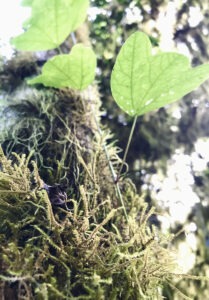
The plants here are very different from the species in the lowlands. One type of tree in the highlands called Scalesia is more closely related to a daisy than any other tree. When we finished the looped trail, we drove to “El Chato,” where tourists can visit the island’s lava tubes and watch the tortoises. The six of us, and a couple people from another group followed a tour guide who lead us through a few cave-like tunnels formed by lava. When the tour ended, we sat at a pavilion, talked about science, and eventually drove home.
We spent the rest of the week netting mockingbirds, and even more finches. I help set up netsand take birds out. We checked mockingbirds for parasites and measured their legs, beak, and wings. Field days are fun, and I like to help, although we still have to do homework some days. Online school is easier now that we have our classes organized and we’ve started, though I still prefer cactus spines to linear equations.
There is a big dock on Santa Cruz, where people can take small boats called water taxis to bigger boats or to other parts of the island. In the afternoon we sometimes walk to the dock and watch the marine life. Black-tipped reef sharks are often swimming in groups of three or four, but today there were nearly 30 sharks!
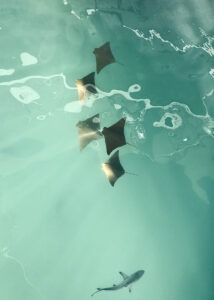
We were watching the fish off of the dock, and saw a group of golden cownose rays! They swam along the side of the dock where we could watch them. We watched the sharks, rays, and a turtle near the dock for a long time and took lots of photos.
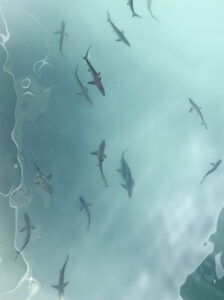
Lots happened this week, and I can’t describe all of it in a letter but I hope this was a good enough glimpse.
If you are interested in following our expedition, check for new letters each week on the University Webpage, where you can find blog posts, and ask questions.
Until next week,

